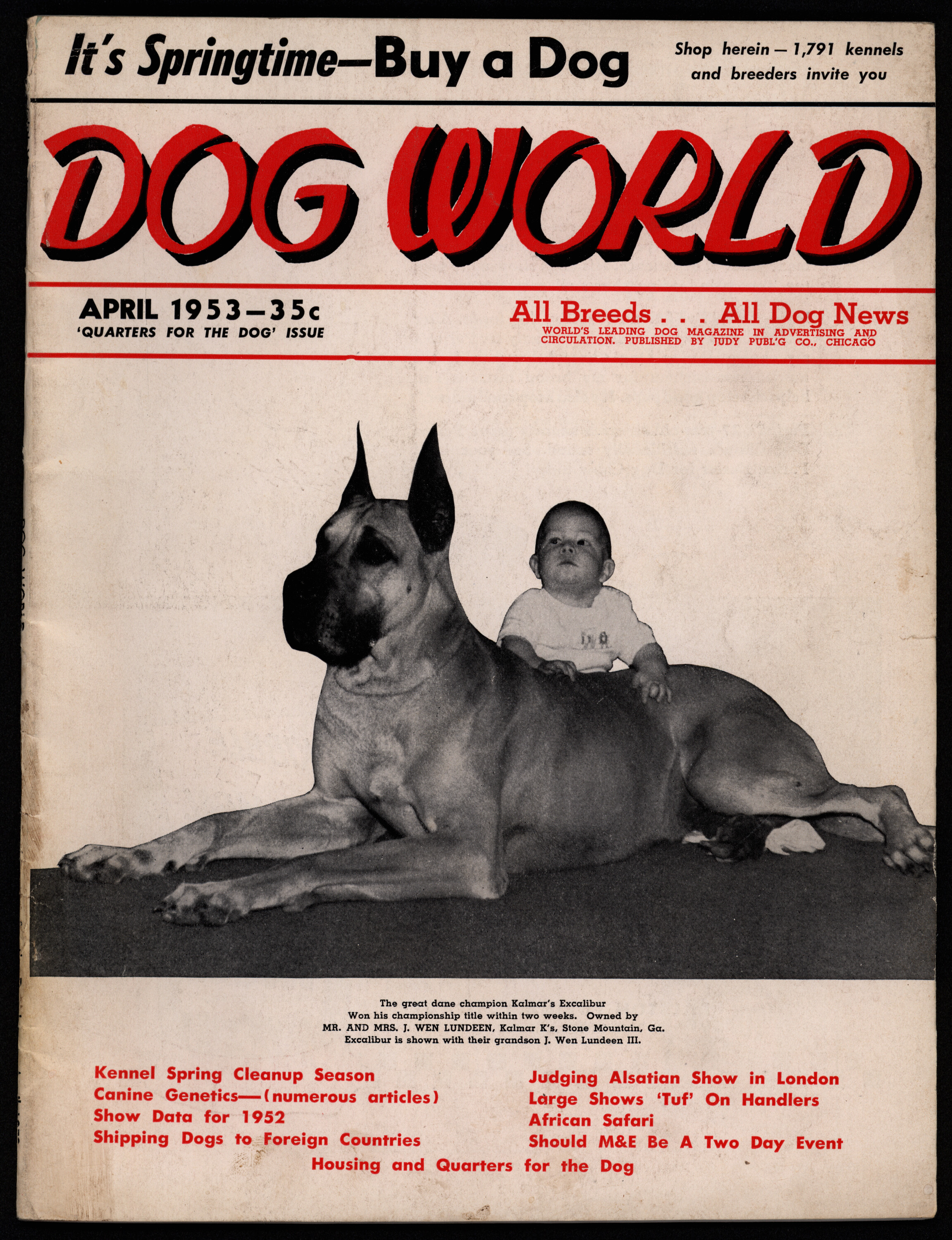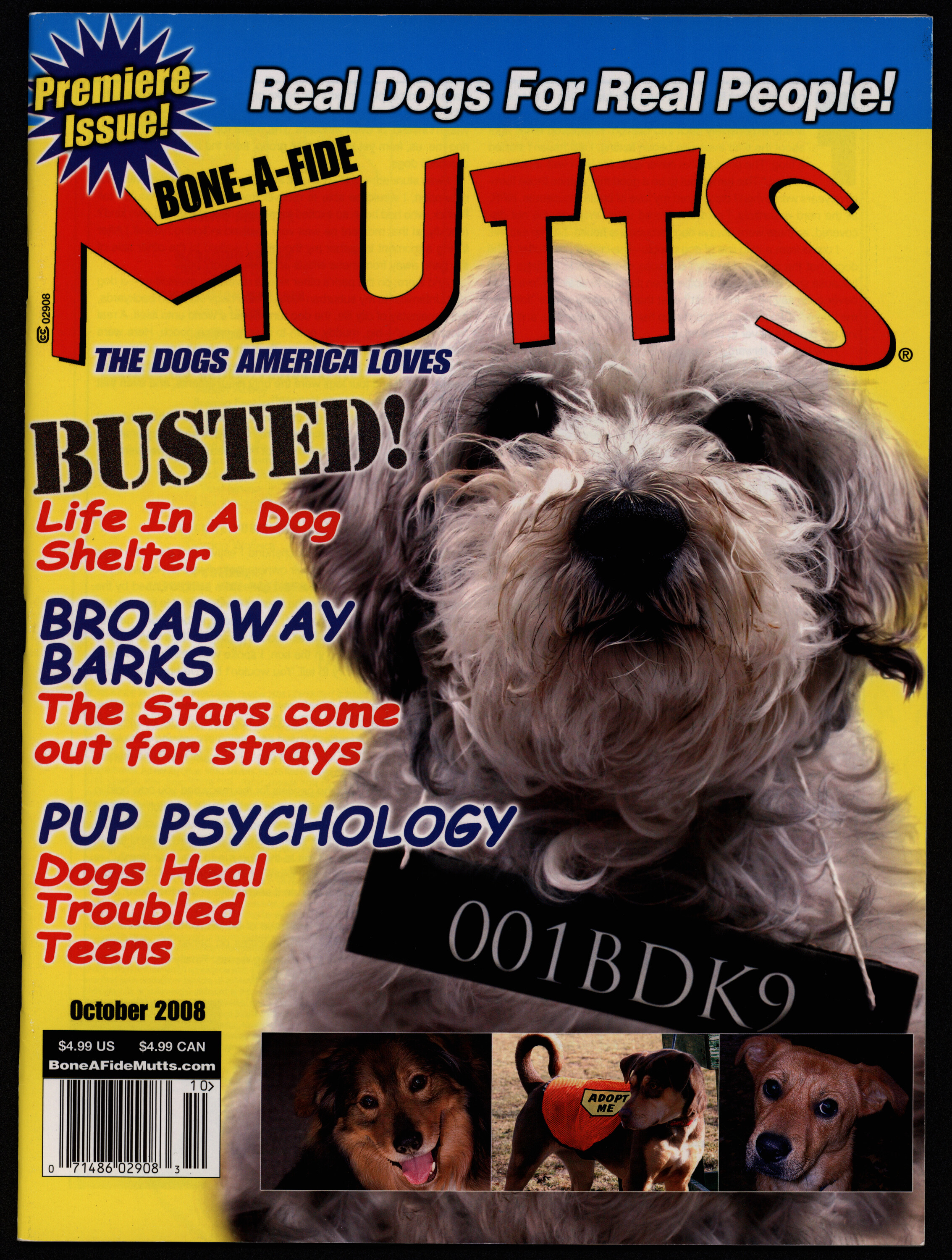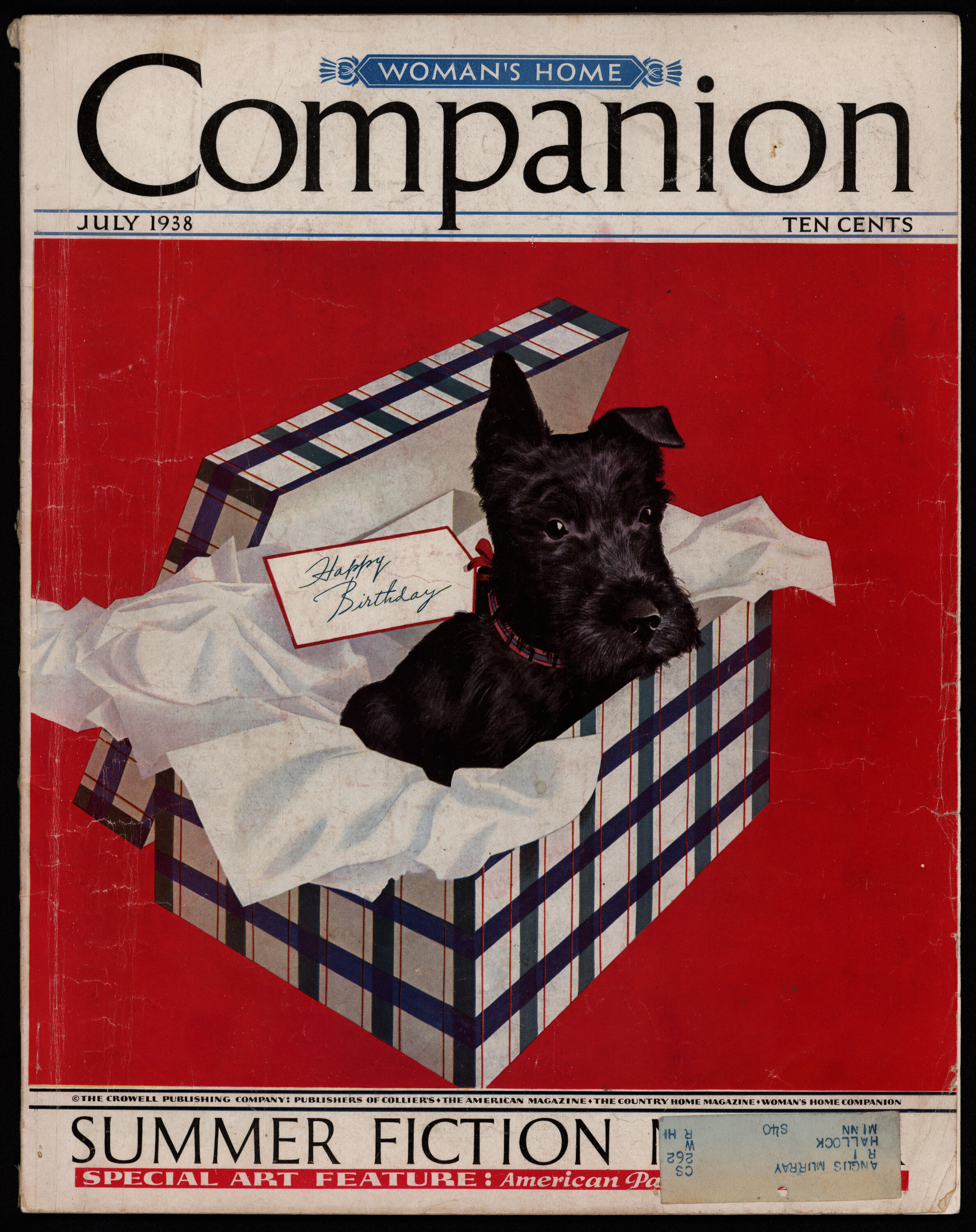Fancy Magazines for Pet Fanciers: Birds, Cats, Dogs, and Ferrets
Dogs
The dog was most likely the first animal domesticated by humans (probably 30,000 years or more ago). The earliest dog remains in North America have been radiocarbon-dated to around 7880 B.C.E., though it seems likely that dogs were here earlier than that and that the earliest Pleistocene-era settlers of the Americas brought their own dogs with them: genetic testing suggests that these ancient dogs were related to Eurasian wolves rather than the North American wolf. These ancient breeds appear to have been supplanted by European breeds, possibly as part of a deliberate campaign on the part of European colonists. Today, they are by far the most popular kind of pet in the United States, with the American Veterinary Medical Association reporting in 2022 that 44.6% of households with pets kept dogs.
We have probably done more to deliberately change the shape of Canis familiaris (literally “dog of the family”) than any other species. Dogs range in size from the massive Great Pyrenees to the tiny Pomeranian and have been bred to serve as everything from companions to beasts of burden. Dogs are famously good at serving as companions for humans and have been part of human society for so long that sayings related to them appear all over our everyday language. To give just a few English examples: we might say that someone works like a dog (perhaps in the hopes of someday being “top dog”), that you can’t teach an old dog new tricks, that a hangover can best be cured with “a hair of the dog (that bit you),” and that it’s best to let sleeping dogs lie. Dogs, it appears, are very much here to stay.
Dog World debuted in 1916 in Oak Park, a suburb of Chicago. It went through several hands —at the time that this issue was produced, it was being published by Captain William Lewis Judy, author of The Dog Encyclopedia (1925) — before finally winding up with Fancy Publications in 2001, who published it until its final issue in 2012. In the 1950s, Dog World was more like a highly detailed newsletter than a magazine in the modern sense. It used images sparingly and instead consisted of columns of closely printed text on everything from dog shows and obedience training to short dog-centric excerpts from literature. Several pages towards the back offer dogs for sale, subdivided by breed.
The advertisements in Dog World are particularly interesting from a modern perspective. They include numerous brands of dog food: Miller’s Dog Meal, Ken-L-Meal, Swift’s Pard Meal, Bresko Dog Food, Bark Dog Meal, Friskies’ Dog Food Meal, Dash Dog Food, and Wayne Dog Food, to mention only a few. At least two of the dog food brands prominently advertise that they contain fresh liver or chlorophyllin. The term “kibble” was just starting to enter the language and a few of the dog foods are described as “kibbled.” Shampoo and veterinary guides are also offered for sale. Perhaps the most amusing advertisement is for “Chaperone,” a powder that promises to keep male dogs away from a female dog in heat if it is sprinkled on her back, flanks, and tail.
Puppies U.S.A. was one of many dog-centric magazines published by Fancy Publications, starting in 1997 and appearing annually until at least 2014. It presents itself as a guide to puppy care and follows through with a very text-intensive presentation, using photos mainly for the title pages of articles and to illustrate specific points. A bit over half the content discusses practical matters while the rest of the magazine is filled with anecdotes about happily adopted dogs or advice on how to name a dog.
In addition to discussing how best to take care of a young dog, the magazine also emphasizes the commitment involved in adopting a puppy. Veterinary care and timelines for puppy maturation feature prominently throughout the issue. The magazine also provides advice on purchasing a puppy for the first time, including advice on how recognize a reputable breeder (and how to avoid a puppy mill). Despite its focus on puppies, the magazine also includes an article on the advantages of adopting an adult dog, noting on page 89 that “sure, puppies are cute, but adult dogs are house-trained.”
Bone-a-fide Mutts was a magazine that focused on non-purebred dogs. Its first issue included a letter from the editor about rescuing a dachshund mix and the dog being rejected by the local dachshund show. In addition to the usual advice on training and living with dogs that one might expect from a typical dog magazine, the magazine also advocated for dog adoption and appreciating dogs without a clear pedigree.
The quirky presentation conceals an important form of activism: dog breeding tends to focus on animals within a small gene pool, which often leads to health problems. The issue includes articles on adopting older dogs and fostering them, as well as covering a combination dog daycare/teen job training program in Portland. As of its first issue in 2008, the magazine was projected to run on a bimonthly schedule, though it appears to have transitioned relatively quickly to an online format and disappeared before renewing its trademark. It seems likely that this was the only physical issue.
Woman’s Home Companion debuted in 1874 under the title The Home, a cheap mail-order monthly. Ownership of the magazine and its title changed several times until it was retitled Woman’s Home Companion in 1897, at which point it became a bimonthly magazine printed on nicer paper. It featured serials and short stories, as well as articles. The magazine was closed down in 1957 when its publisher, Crowell-Collier Publishing Company, ran into hard times and refocused on educational printing as part of Macmillan.
This issue from 1938 features several short stories and several portions of a serial, advice on traveling, and homemaking advice including sewing projects, parenting, and recipes. As with Dog World, a key point of interest are the advertisements: They tend to be domestic, featuring many domestic products like French’s mustard, Chlorox bleach, Kraft Miracle Whip, several brands of toothpaste, Modess sanitary pads, Old Dutch cleanser (featuring seismotite, i.e., pumice), Z.B.T. baby powder, the Bissell sweeper, and A1 Sauce. Also included are some products and brands that are no longer available: Larvex pest control spray for clothes and Bellin's Wonderstoen Dry Method Hair Eraser, for isntance. Also included is an advertisement from the Bell Telephone Company praising the possibilities of the telephone. The dog on the cover is the only dog featured in the issue — false advertising at its worst! — but is a testament to how much people like dogs if just the appearance of a dog might be enough to make the magazine more attractive.



